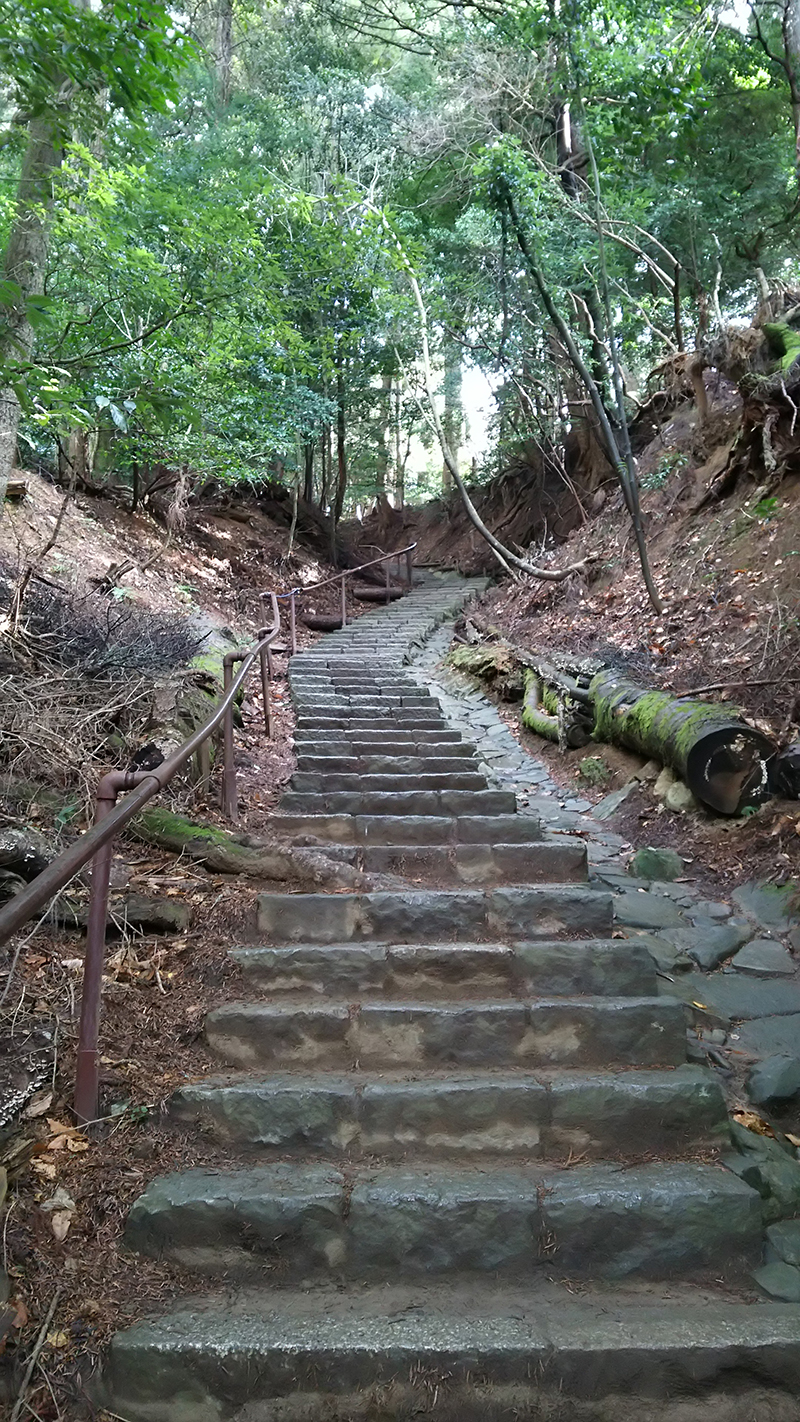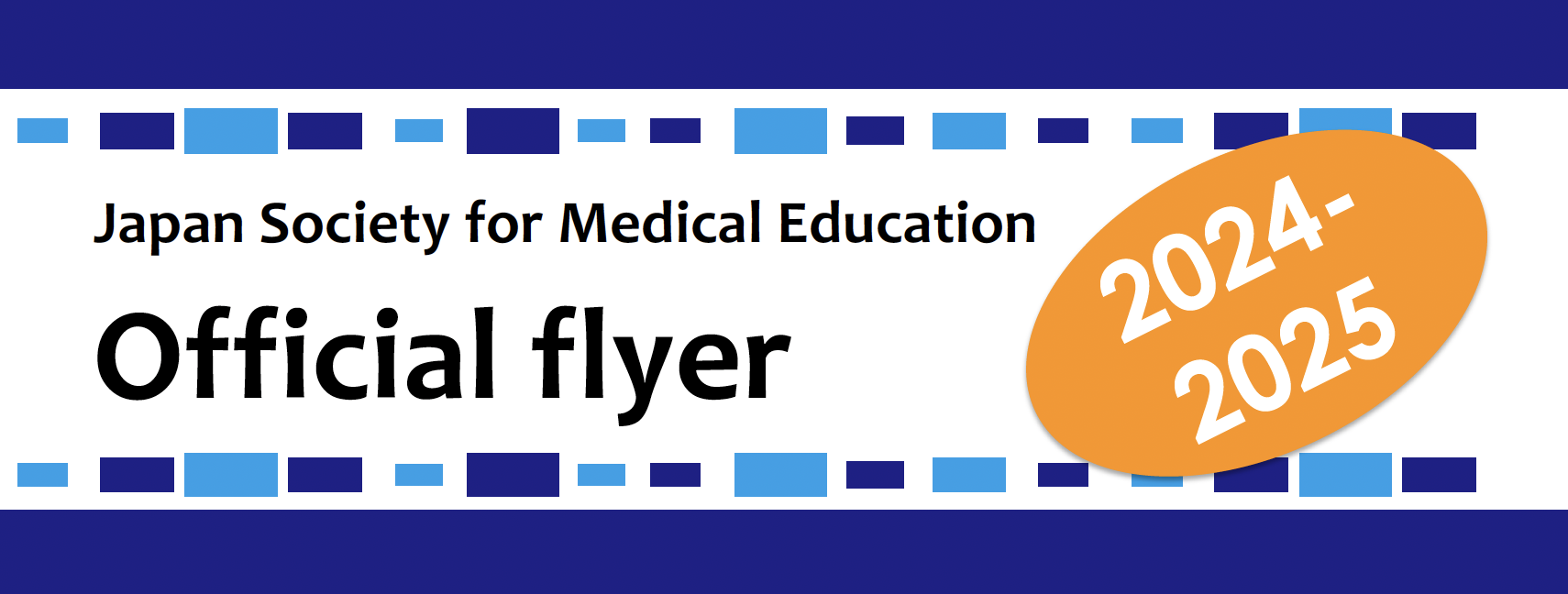
The history of the Japan Society for Medical Education
The Japan Society for Medical Education was founded in 1969 by Taizo Ushiba, who became the first president. The original aims of the society were to promote the advancement of medical education research and support the delivery of medical education in Japan. As the society has grown, the aims have expanded to include education policy, specialised postgraduate training, educator training and international collaboration to promote excellence in health professions research.
| Event related to the Japan Society for Medical Education, JSME. | |
| Key global event in medical education. | |
| Key event in Japanese medical education. |
| Year/month/date | Event |
|---|---|
| 1969/8/30 | Establishment of the Japan Society for Medical Education, JSME. |
| 1969/8/30 | 1st JSME Symposium held. |
| 1969/10/4 | 1st JSME conference held at Keio University, Tokyo. |
| 1969 | McMaster University, Canada, introduces Problem-Based Learning (PBL). |
| 1970/2/25 | Publication of the first edition of the society's journal "Medical Education". |
| 1970/8/29 | 2nd General Meeting of JSME held at Gakushi-kaikan, Tokyo. |
| Membership numbers (individual members: 391, institutional members: 39). | |
| 1971/1/1 | Start of the 2nd term. |
| President: Taizo Ushiba, Vice Presidents: Yawara Yoshitoshi, Hidenobu Mashima. | |
| 1972/2/25 | "Medical Education" volume 3, issue 1, published featuring a special report on "The Current State of Medical Education", which became known as the "Medical Education White Paper". |
| 1973/1/1 | Start of the 3rd term. |
| President: Taizo Ushiba, Vice Presidents: Yonezo Nakagawa, Akimasa Yoshioka. | |
| 1973/6/11 | Taizo Ushiba (President), Shigeaki Hinohara and Masatomo Tachi (Vice Presidents) participate in the WHO-sponsored teacher training workshop in Sydney, Australia. |
| 1974/12/14 | 1st Workshop for Medical Educators (Fuji Seminar) held. |
| 1975/1/1 | Start of the 4th term. |
| President: Taizo Ushiba, Vice Presidents: Yonezo Nakagawa, Akimasa Yoshioka. | |
| 1975 | Dundee University, UK, introduces Objective Structured Clinical Examination (OSCE). |
| 1976/10/25 | "Medical Education" volume 7, issue 5, published with explanations of the medical education terms "GIO-SBO-LS-R". The illustrations by Mr. Katsuo Nagi in this issue, lead to future features in "Medical Education" such as "cover Message" and "illustration column". |
| 1977/1/1 | Start of the 5th term. |
| President: Taizo Ushiba, Vice Presidents: Yonezo Nakagawa, Akimasa Yoshioka. | |
| 1978/5/12 | Publication of "Medical Education Manual 1. Principles and Methods of Medical Education". |
| 1978/7/21 | Publication of the "Medical Education White Paper" (1978) (as a supplement in "Medical Education" ). |
| 1978/7/31 | 10th JSME conference held. |
| Membership numbers (individual members: 685, institutional members: 85). | |
| 1979/1/1 | Start of the 6th term (change of term length to 3 years). |
| President: Taizo Ushiba, Vice Presidents: Yonezo Nakagawa, Junichi Suzuki. | |
| 1979/11/25 | Publication of "Medical Education Manual 2. How to Create a Curriculum". |
| 1979/4 | Establishment of the Medical Education Promotion Foundation. |
| 1981/11 | Medical Education Promotion Foundation's 1st "Domestic Medical School Inspection and Discussion Meeting" held. |
| 1982/1/1 | Start of the 7th term. |
| President: Taizo Ushiba, Vice Presidents: Yonezo Nakagawa, Junichi Suzuki. | |
| 1982/2/5 | Publication of "Medical Education Manual 4. Evaluation and Testing". |
| 1982/11/25 | Publication of "Medical Education Manual 3. Teaching and Learning Methods". |
| 1983 | Association of American Medical Colleges (AAMC) General Professional Education of the Physician Report (GPEP), USA (Acad. Med. 1984) . |
| 1985/1/1 | Start of the 8th term. |
| President: Taizo Ushiba, Vice Presidents: Yonezo Nakagawa, Junichi Suzuki. | |
| 1985/4 | 79th National Examination conducted. Changed from twice a year (spring and autumn) to only once in spring. |
| 1985 | 1st Ottawa Conference, Canada. |
| 1988/1/1 | Start of the 9th term. |
| President: Taizo Ushiba, Vice Presidents: Yonezo Nakagawa, Junichi Suzuki. | |
| 1988/7/26 | 20th Japan Society for Medical Education conference held. |
| Membership numbers (individual members: 794, institutional members: 99). | |
| 1988 | Adoption of the "Edinburgh Declaration" at the World Federation for Medical Education (WFME) World Conference. |
| 1990/11 | Masahisa Nishizono, a member of the steering committee, becomes president of the Association for Medical Education in the Western Pacific Region, one of the regional associations of WFME. |
| 1991/1/1 | Start of the 10th term. |
| President: Taizo Ushiba, Vice Presidents: Yonezo Nakagawa, Junichi Suzuki. | |
| 1991 | Official start of the peer review system for "Medical Education". |
| 1991/5/13 | The Ministry of Health and Welfare's (MHW) Clinical Practice Review Committee divides medical student activities into three levels and presents its final report (Maekawa Report). |
| 1991/6/3 | Announcement of amendments to university establishment standards and degree regulations (generalization of establishment standards, introduction of self-inspection and evaluation, subject registration system, abolition of pre-medical courses, etc). |
| 1993 | The General Medical Council, UK, publishes their outcomes for graduates "Tomorrow’s Doctors". |
| 1994/1 | Start of the 11th term. |
| President: Junichi Suzuki, Vice Presidents: Kan Tanaka, Nobuya Hashimoto. | |
| 1994/8/23 | Formal decision on the accreditation of physicians by the Japan Medical Association, the Japanese Association of Medical Sciences and the Council for Specialist Physician Training. |
| 1996/7 | The "Ushiba Prize" and "Kakeda Prize" for medical education are awarded for the first time. |
| 1997/1 | Start of the 12th term. |
| President: Motokazu Hori, Vice Presidents: Akitsugu Ojima, Saichi Hosoda. | |
| 1997 | JSME joins the Japan Medical Association as the 90th Section |
| 1998/7/16 | 30th JSME conference held. |
| Membership numbers (individual members: 1,295, institutional members: 201). | |
| 1999/4/15 | The MHW's medical personnel subcommittee, the "National Medical Examination Improvement Review Committee", publishes a report recommending the implementation of increased question numbers, content improvement, revision of pass/fail criteria, and a question pool system with retrieval of questions to commence from the 95th National Medical Examination in 2001. |
| 1999/9/6 | The Ministry of Education's University Council publishes "About the Revision of University Establishment Standards etc. (Report)." Obligation for self-inspection and evaluation by universities, and organizational training for faculty members becomes mandatory. |
| 2000/1 | Start of the 13th term. |
| President: Akitsugu Ojima, Vice Presidents: Masahiko Hatao, Nobuhiko Saito. | |
| 2000 | All 80 medical schools in Japan become society members. |
| 2000/4/1 | Establishment of the "International Research Center for Medical Education, University of Tokyo." |
| 2000/6/14 | The Medical Examination System Study Group issues "National Examination Question Standards (2001 Edition)". The "National Examination Blueprint", which indicates the distribution of questions across clinical and subject categories, is also presented. |
| 2000/12/6 | MHW announced the "Amend the Medical Care Act". Mandatory residency training for more than two years to start from April 1st 2004. |
| 2001/3/27 | Ministry of Education, Culture, Sports, Science and Technology (MEXT)'s commitee on the direction of medical and dental education publishes "Improvement Methods for Medical and Dental Education in the 21st Century – For the Reconstruction of Undergraduate Education". The "Medical Education Model Core Curriculum", "Dental Education Model Core Curriculum", "Preparatory Education Model Core Curriculum", "Guidelines for Implementing Clinical Clerkships", and "Guidelines for Evaluating Faculty Educational Achievements" were presented. |
| 2001/4/1 | Establishment of the "Medical Education Development Center (MEDC)". |
| 2001/5 | Publication of the "Postgraduate Residency Training Curriculum Proposal." |
| 2002/1 | Introduction of a JSME board and council system, with a retirement age of 65 for board members. |
| 2002/1 | MEXT's research group conducts the "1st OSCE Trial" for evaluating students before clinical clerkship. |
| 2002/2 | MEXT's research group conducts the "CBT Trial" for evaluating students before clinical clerkship. |
| 2002/4/1 | Establishment of the "Common Achievement Tests Organization (CATO)" by MEXT. |
| 2003/1 | Start of the 14th term (transition from a steering committee to a board). |
| President: Nobuhiko Saito, Vice Presidents: Saburo Horiuchi, Nobutaro Ban. | |
| 2004/4 | Start of the new residency training system for physicians. |
| 2005/12 | Official implementation of "Examination (CBT, OSCE) by Examination Common Achievement Tests Organization (CATO) ." |
| 2006/1/1 | Start of the 15th term. |
| President: Nobuhiko Saito, Vice Presidents: Saburo Horiuchi, Nobutaro Ban. | |
| 2006 | Joint symposium with Korea launched. |
| 2007/12/24 | Medical Education Model Core Curriculum revised (2006). |
| 2007/7/25 | Hosting of international participants for the JSME annual conference oral/poster presentation |
| 2008/7/25 | 40th JSME conference held. |
| Membership numbers (individual members: 2,041, institutional members: 227). | |
| 2008/4/1 | Increase in medical school enrollment begins. |
| 2009/1/1 | Start of the 16th term. |
| President: Nobutaro Ban, Vice Presidents: Kouki Inai, Osamu Fukushima. | |
| 2009/5/1 | Medical Education Curriculum Review Committee presents "Improvements in Medical Education Considering the Review of the Clinical Clerkship System." |
| 2009/7 | The "Hinohara Prize" for medical education is awarded for the first time. |
| 2010/8/12 | "Medical Education" registered with J-STAGE. |
| 2010/10/1 | JSME obtains corporate status as a "General Incorporated Association". |
| 2010/10 | the Educational Commission for Foreign Medical Graduates, USA, announces "From 2023, only graduates from internationally accredited medical schools will be eligible to apply to practice medicine in the United States." |
| 2011/3/31 | Medical Education Model Core Curriculum revised (2011). |
| 2011/6/1 | With incorporation, the term length changes from 3 years to 2 years, and the fiscal year starts from June 1 instead of January 1. |
| 2012/6/1 | Start of the 17th term. |
| President: Nobutaro Ban, Vice Presidents: Osamu Fukushima, Kiyoshi Kitamura. | |
| 2013/12/16 | MEXT's university reform project starts "Establishing an Accreditation System for Medical Education in Accordance with International Standards" as a trial evaluation of medical education fields. |
| 2014/6/1 | Start of the 18th term. |
| President: Nobutaro Ban, Vice Presidents: Osamu Fukushima, Kiyoshi Kitamura. | |
| 2015/12/1 | Establishment of the Japan Accreditation Council for Medical Education (JACME). |
| 2016/6/1 | Start of the 19th term. |
| President: Yasuyuki Suzuki, Vice Presidents: Osamu Fukushima, Yasuhiko Konishi. | |
| 2017 | Trial implementation of Post-Clinical Clerkship OSCE (Post-CC OSCE). |
| 2017/3/20 | Japan Accreditation Council for Medical Education (JACME) approved by WFME as an accrediting agency based on international standards. |
| 2017/3/31 | Medical Education Model Core Curriculum revised (2017). |
| 2018/2/10 | The 112th National Examination changes from 500 to 400 questions. |
| 2018/6/1 | Start of the 20th term. |
| President: Yasuyuki Suzuki, Vice Presidents: Osamu Fukushima, Yasuhiko Konishi. | |
| 2018/8/3 | 50th JSME conference held. |
| Membership numbers (individual members: 2,475, institutional members: 309). | |
| 2020/6/1 | Start of the 21st term. |
| President: Yasuhiko Konishi, Vice Presidents: Masami Tagawa, Michito Hirakata. | |
| 2021 | Joint symposium with Korea and Taiwan launched. |
| 2022/6/1 | Start of the 22nd term. |
| President: Yasuhiko Konishi, Vice Presidents: Masami Tagawa, Michito Hirakata. | |
| 2023 | Medical Education Model Core Curriculum revised (2022). |
| 2024/6/1 | Start of the 23rd term. |
| President: Hiroshi Nishigori, Vice Presidents: Michio Shiibashi, Fumiko Okazaki. |

